Welcome to your guide on kitchen and bathroom renovations in NZ, where we’ll explore how upgrading these two spaces can transform your home, lifestyle, and even its value. Kitchens and bathrooms are more than just functional areas, they’re where meals are shared, mornings begin, and relaxation takes place, so when they start to feel outdated or impractical, a renovation can make a big difference. In New Zealand, homeowners are increasingly investing in modern designs, smarter storage, and energy-efficient solutions that not only improve day-to-day living but also add appeal for future buyers. If you’ve been considering a renovation, this article will help you understand the costs, planning steps, and design ideas tailored for NZ homes, giving you the confidence to create spaces that are both practical and enjoyable.
Kitchen and bathroom renovations in NZ improve comfort, add value, and modernize your home. The average kitchen renovation costs between $20,000–$50,000, while bathroom renovations range from $15,000–$30,000, depending on size, materials, and finishes. Popular upgrades include open-plan kitchen layouts, energy-efficient appliances, walk-in showers, and smart storage solutions. Working with experienced NZ renovation specialists ensures your project meets local building standards and delivers a stylish, functional result.
Table of Contents
Why Renovate Your Kitchen Or Bathroom?
When you think about home renovations in New Zealand, kitchens and bathrooms often sit at the top of the list. These two areas get the most daily use, so it’s no surprise that updating them brings some of the biggest rewards. Renovating isn’t just about fresh paint or new fixtures, it’s about creating spaces that make life easier, more comfortable, and more enjoyable.
Everyday Benefits: Improved Functionality, Modern Design, Energy Efficiency
A well-planned kitchen or bathroom renovation makes your home work better for you. In the kitchen, this might mean adding more bench space, installing smart storage solutions, or upgrading to modern appliances that save time and energy. In the bathroom, it could be as simple as rethinking the layout for better flow or investing in efficient water fixtures. Beyond convenience, design trends in NZ now focus heavily on sustainability. Energy-efficient lighting, eco-friendly materials, and water-saving taps not only lower your utility bills but also help reduce your environmental footprint.
Financial Benefits: Increase In Resale Value, Appeal To Future Buyers
Renovating a kitchen or bathroom is one of the smartest financial decisions a homeowner in New Zealand can make. These rooms are often deal-breakers when buyers are comparing properties. A modern, functional kitchen or a stylish, well-designed bathroom can significantly increase resale value and attract more interest from potential buyers. Even if you’re not planning to sell right away, investing in these spaces ensures your property remains competitive in the NZ housing market.
Emotional Benefits: Creating Spaces You Actually Enjoy Using
Your kitchen and bathroom aren’t just practical rooms, they’re part of your daily routine and lifestyle. Imagine starting your morning in a bathroom that feels calm, fresh, and organized. Or cooking dinner in a kitchen where everything has its place and the design matches your taste. Renovations can transform these everyday tasks into enjoyable experiences, making your home a place you truly love spending time in.
A Question To Get You Thinking
What’s the one thing in your bathroom or kitchen you’d love to change first? For some, it’s outdated tiles or worn cabinets. For others, it’s a lack of storage or poor lighting. Whatever your answer, that’s the perfect starting point for planning your next renovation project.
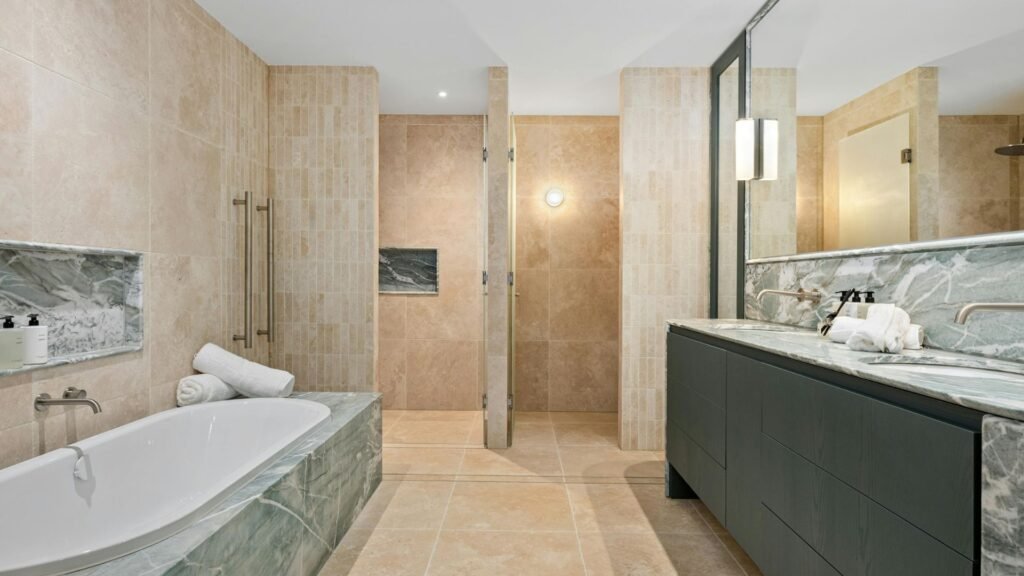
Understanding Renovation Costs In NZ
When planning a home upgrade, one of the first questions most homeowners ask is, “How much will it cost?” Renovations are a big investment, and understanding the cost of kitchen and bathroom renovations in NZ helps you set realistic expectations before getting started. Prices vary widely depending on the size of the space, the quality of finishes, and whether you choose a simple refresh or a complete luxury remodel. Below is a breakdown to give you a clearer picture.
Average Kitchen Renovation Cost In New Zealand
Small Kitchen: $20,000 – $30,000
A small kitchen update usually covers new cabinetry, benchtops, and mid-range appliances. This range suits compact apartments or modest homes.
Mid-Range Kitchen: $30,000 – $50,000
Most New Zealand families fall into this range. It typically includes better-quality cabinetry, stone benchtops, upgraded appliances, and improved layouts.
Luxury Kitchen: $50,000+
High-end kitchens can go well above $80,000, especially if you choose designer appliances, custom cabinetry, premium stone, or structural changes like adding an island or altering walls.
Average Bathroom Renovation Cost In New Zealand
Small Bathroom: $15,000 – $20,000
This usually covers a new vanity, standard shower, tiling, and basic fixtures. Ideal for ensuite or guest bathrooms.
Mid-Range Bathroom: $20,000 – $30,000
At this level, you can expect modern tiling, quality fittings, improved storage, and stylish design elements like floating vanities.
Luxury Bathroom: $30,000+
A luxury bathroom often includes walk-in showers, freestanding tubs, underfloor heating, premium stone, and top-of-the-line fittings.
Factors Influencing Renovation Costs
- Materials: Stone benchtops, hardwood cabinetry, or imported tiles will naturally cost more than laminate or ceramic.
- Size Of The Space: Larger kitchens and bathrooms require more labour and materials, increasing the total cost.
- Labour Costs: Hiring skilled professionals in plumbing, electrical, or custom joinery can significantly affect your budget.
- Design Choices: Bespoke layouts, structural changes, or luxury finishes add to the price tag.
- Location In NZ: Renovation costs can differ depending on where you live. Cities like Auckland and Wellington often have higher labour and material costs compared to smaller towns.
Tips For Setting A Realistic Budget
- Get Multiple Quotes: Always compare at least three quotes from licensed renovation specialists in NZ.
- Prioritise Needs Over Wants: Decide what’s essential, like waterproofing and layout, before splurging on extras.
- Plan For Unexpected Costs: Set aside at least 10–15% of your budget for surprises such as hidden plumbing issues or electrical upgrades.
- Think Long-Term: Spending more on durable, quality materials upfront can save money on repairs and replacements later.
- Match Renovations To Property Value: A $100,000 kitchen in a $400,000 home may not provide the best return on investment. Balance your budget with the value of your property and area.
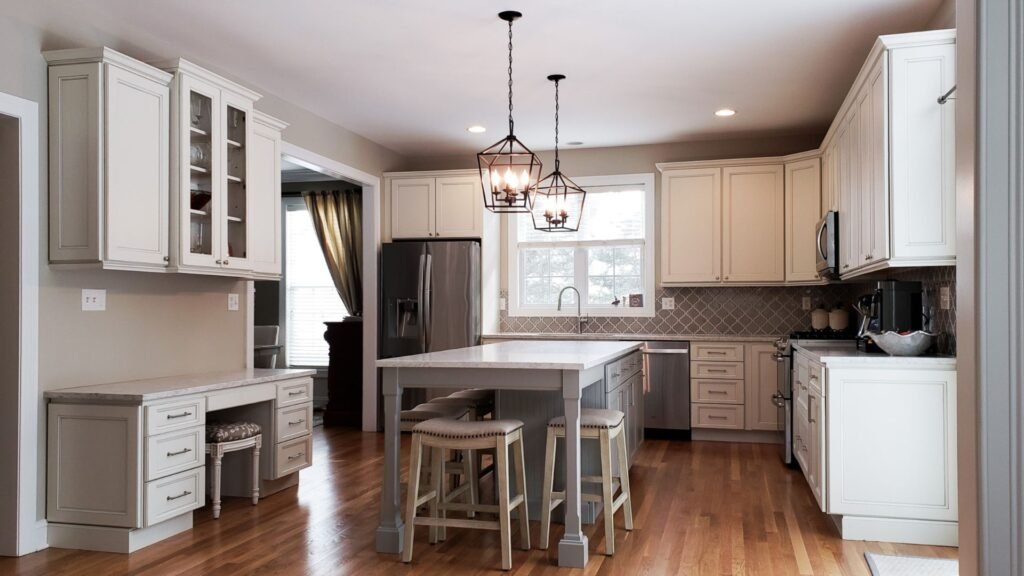
Planning Your Renovation
When it comes to kitchen and bathroom renovations in NZ, planning is the stage that sets the foundation for everything else. A well-thought-out plan saves time, prevents unnecessary costs, and ensures you end up with a space that truly fits your lifestyle.
Start With A Vision
Before you dive into quotes and contractors, take time to picture how you want your new kitchen or bathroom to look and feel. Think about your daily habits: Do you need more bench space for cooking? Would a walk-in shower make mornings easier? Or maybe you’re after a design that feels brighter and more modern. Your lifestyle needs and design preferences should guide every decision you make.
Importance Of Creating A Timeline
Renovations don’t happen overnight. A realistic timeline keeps the project moving and reduces stress. Break it into stages such as planning, demolition, installation, and finishing. For example, a full kitchen renovation may take six to eight weeks, while a bathroom might take three to six weeks. Having a clear schedule also helps you plan for disruptions, like where you’ll cook or shower during the renovation period.
DIY Or Hire Professionals?
Not every upgrade requires a team of contractors. Simple tasks such as painting walls, installing shelves, or replacing cabinet handles can often be done yourself. Larger projects like plumbing, electrical work, or structural changes should always be left to qualified professionals. In New Zealand, these jobs often require licensed tradespeople, so weigh the risks before choosing the DIY route.
Building Consents In NZ
Depending on the scope of your renovation, you may need approval from your local council. For instance, moving plumbing lines, altering structural walls, or making electrical changes usually requires building consent. Failing to get the right paperwork can cause issues when selling your home later. Always check with your council or ask your contractor about the consents you need before starting work.
Renovation Planning Checklist
Here’s a quick checklist to keep your project on track:
- Define your renovation goals (style, function, budget).
- Create a vision board with design inspirations.
- Set a realistic budget, including a 10–15% buffer for unexpected costs.
- Draft a project timeline with key milestones.
- Decide what you can DIY and where you’ll need professionals.
- Check local building consent requirements.
- Gather quotes from at least three licensed contractors.
- Plan for temporary living arrangements if needed.
By following this step-by-step approach, you’ll be better prepared to tackle your kitchen and bathroom renovations in NZ with confidence, making the process smoother and the outcome more rewarding.
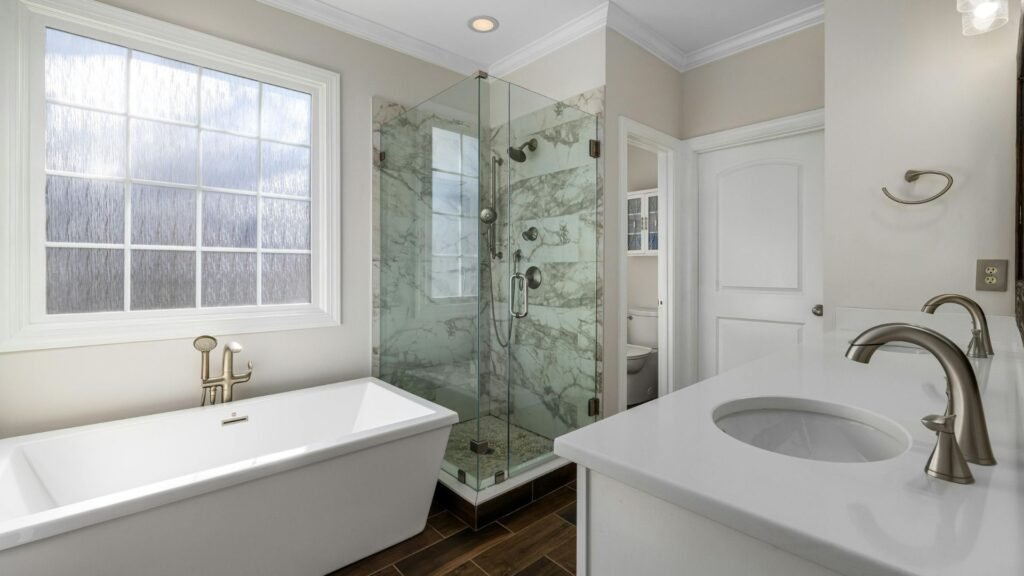
Kitchen Renovation Ideas For NZ Homes
Renovating your kitchen is one of the most rewarding projects you can take on as a homeowner in New Zealand. The kitchen is often the heart of the home, where families gather and memories are made, so a thoughtful design can completely change the way you use your space. Below are some practical ideas that reflect the latest kitchen renovation trends in NZ, blending style, function, and long-term value.
Layout Improvements: Open-Plan Kitchens And Breakfast Islands
Open-plan kitchens are becoming increasingly popular in New Zealand homes. By removing walls and creating a seamless flow between the kitchen, dining, and living areas, you can make your home feel more spacious and inviting. This type of layout works especially well for families and those who love entertaining, as it keeps everyone connected.
Adding a breakfast island is another smart choice. Not only does it provide extra bench space for preparing meals, but it also doubles as a casual dining spot or a place for kids to do homework while you cook. Islands can also include built-in storage and even small appliances, helping to maximize functionality in modern NZ kitchens.
Storage Solutions: Soft-Close Drawers And Hidden Pantries
A clutter-free kitchen is easier to use and more enjoyable to spend time in. Soft-close drawers are a popular upgrade because they reduce noise, prevent wear and tear, and add a touch of luxury to everyday use.
Hidden or walk-in pantries are another sought-after feature in New Zealand homes. They allow you to keep bulky items, appliances, and food supplies out of sight while still being easy to access. For smaller kitchens, clever pull-out shelving and corner units can make the most of every inch of available space.
Material And Style Trends In New Zealand: Natural Wood, Stone, Modern Fixtures
When it comes to style, natural materials are leading the way in NZ kitchen renovations. Warm timber finishes, stone benchtops, and tiled splashbacks create a timeless look that pairs beautifully with both modern and traditional homes.
Modern fixtures like matte black taps, minimalist handles, and statement lighting can give your kitchen a fresh, updated feel. Many homeowners are also embracing a mix of textures, combining wood, metal, and stone, to create depth and character. These choices not only improve the appearance of your kitchen but also enhance its durability and resale value.
Energy-Efficient Appliances
With rising energy costs in New Zealand, upgrading to energy-efficient appliances is a smart move. Fridges, ovens, and dishwashers with higher energy star ratings may cost more upfront but save you money in the long run. They’re also better for the environment, aligning with the growing focus on sustainable living in NZ households.
Appliances like induction cooktops and water-saving dishwashers are both practical and eco-friendly, making them a win-win investment for modern kitchens.
Quick Tip
In New Zealand, smaller kitchens can feel bigger with lighter colours and reflective surfaces. Using white or pale tones for cabinetry and walls, combined with glossy finishes or mirrored splash backs, helps create the illusion of space without major structural changes.
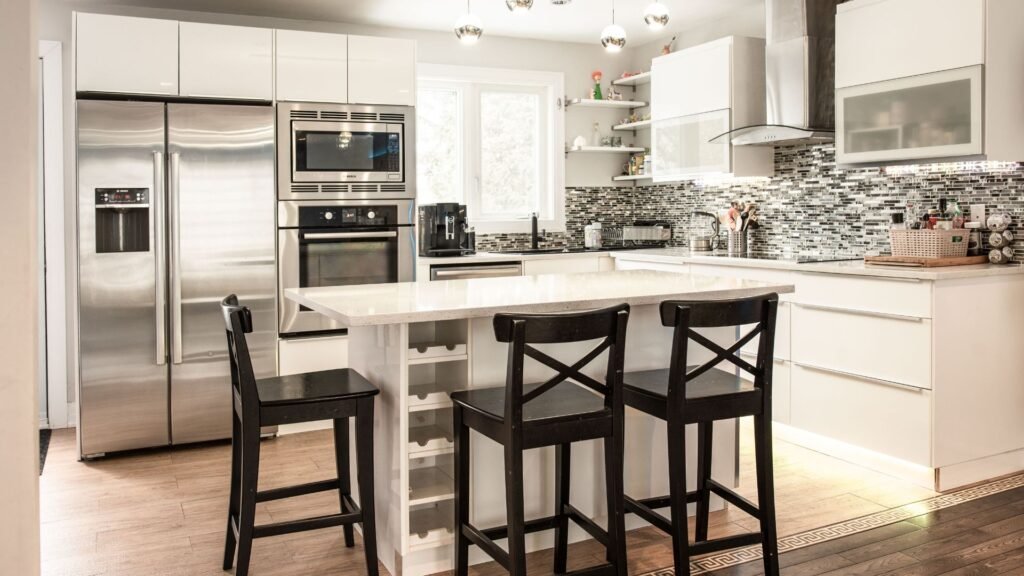
Bathroom Renovation Ideas For NZ Homes
Bathrooms are one of the most important rooms in any New Zealand home. A well-designed bathroom is not only practical but also adds comfort and value. Whether you are planning a complete remodel or small upgrades, the following ideas will help you create a bathroom that suits your lifestyle and looks great for years to come.
Modern Showers Vs. Traditional Bathtubs
One of the biggest choices for any bathroom renovation is deciding between a modern shower or a traditional bathtub. Many NZ homeowners are now opting for sleek, walk-in showers with frameless glass doors. These are ideal for smaller spaces, easy to clean, and give bathrooms a more contemporary look. On the other hand, bathtubs remain popular for families with children or for those who love a relaxing soak after a long day. Freestanding tubs can also serve as a luxury feature in a master bathroom. The decision comes down to your lifestyle and space, if you want convenience and a modern style, a shower may be best, but if relaxation is a priority, a bathtub is worth considering.
Waterproofing And Ventilation (NZ’s Climate Context)
With New Zealand’s humid climate and varying temperatures, waterproofing and ventilation are non-negotiable in bathroom renovations. Proper waterproofing prevents leaks, mold, and structural damage. Licensed professionals should always handle this stage to ensure the work meets NZ building standards. Ventilation is equally important, good airflow reduces condensation and keeps your bathroom fresh. Installing an extractor fan and ensuring windows can open makes a huge difference. If you live in areas prone to dampness, this step becomes even more essential. Skipping waterproofing or ventilation can lead to costly repairs in the future, so it’s an area where you shouldn’t cut corners.
Smart Storage For Small Bathrooms
Many NZ homes, especially older ones, have compact bathrooms. Smart storage is key to making the most of limited space. Floating vanities create the illusion of more floor area while offering storage underneath. Built-in shelves or recessed wall niches are perfect for keeping toiletries within easy reach without cluttering the room. Tall, narrow cabinets can maximize vertical space, and mirrored cabinets provide both storage and functionality. Simple upgrades like towel hooks, drawer organizers, and sliding shelves can also make small bathrooms far more practical without a complete overhaul.
Popular Styles In NZ: Minimalist, Coastal, Contemporary
Design trends in New Zealand often draw inspiration from the country’s natural surroundings and relaxed lifestyle. Minimalist bathrooms with clean lines, neutral tones, and uncluttered layouts are timeless and easy to maintain. Coastal styles, inspired by NZ’s beaches, often feature light colours, wooden accents, and natural textures that bring a calming feel to the space. Contemporary bathrooms lean on modern finishes like matte black fixtures, large-format tiles, and bold feature walls. Choosing a style that reflects your personality and complements the rest of your home ensures your bathroom feels cohesive and inviting.
Lighting Ideas For Ambience And Practicality
Lighting is one of the most overlooked aspects of bathroom design, yet it can completely change the atmosphere. In NZ homes, layering different types of lighting works best. Bright task lighting around mirrors makes daily routines like shaving or applying makeup easier. Ambient ceiling lights provide overall illumination, while accent lights can highlight features like a freestanding tub or tiled wall. Consider adding dimmable lights or LED strips under vanities for a touch of luxury. Natural light is also valuable, so if possible, position windows or skylights to bring in daylight while maintaining privacy.
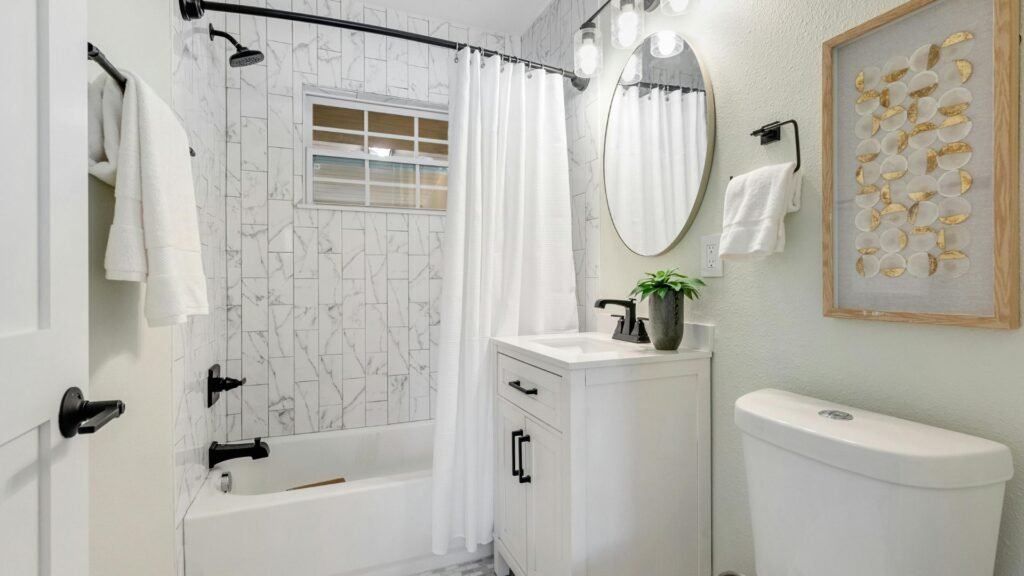
Choosing The Right Professionals
You want a team you can trust. Start by mapping the jobs you need. Match each job to the right trade. Keep one lead contractor to coordinate.
- Set goals and budget first
- Decide scope: refresh or full rebuild
- Confirm what needs consent
Types Of Experts To Consider
Designer
- Translate your ideas into a clear plan.
- Plans layouts, storage, lighting, and finishes.
- Produces drawings for quotes and consent.
Builder (Often LBP-Qualified)
- Handles framing, structural work, and fit-off.
- Coordinates trades on site.
- Supplies Producer Statements when needed.
Plumber / Gasfitter
- Moves or upgrades pipes, fixtures, and hot water.
- Manages waterproofing details with the builder.
- Must be registered with the NZ Plumbers, Gasfitters and Drainlayers Board.
Electrician
- Plans circuits, task lighting, and appliance feeds.
- Installs RCDs and ventilation wiring to code.
- Must be licensed with the Electrical Workers Registration Board.
How To Choose A Renovation Company In NZ
Shortlist Locals
- Look for “kitchen and bathroom renovation specialists NZ” with proven NZ projects.
- Favour teams that work in your suburb or city.
Check Qualifications
- Ask if builders are Licensed Building Practitioners.
- Confirm electrical and plumbing licences.
- Verify insurance and public liability cover.
Compare Detailed Quotes
- Provide the same plans to each company.
- Ask for itemised labour, materials, and PC sums.
- Clarify what is excluded: demo, waste, permits, asbestos, after-hours work.
Review Process And Timeline
- Who is the site lead?
- How do they handle variation request
- What is the payment schedule tied to milestones?
Warranty And Support
- Request written warranties for workmanship and products.
- Ask how they handle defects or call-backs after handover.
Check Reviews, Portfolios, And Credentials
Reviews
- Read Google and Facebook reviews with dates.
- Look for consistent comments on communication and finish quality.
- Be wary of only 5-star ratings with no detail.
Portfolio
- Ask for before-and-after photos, not just staged shots.
- Look for projects with the same constraints as yours: small spaces, villas, apartments, coastal homes.
References
- Call recent clients.
- Ask what went right, what slipped, and how issues were fixed.
- Verify they finished on time and on budget.
Credentials
- Licensed Building Practitioner for structural work.
- Registered Master Builders or similar trade bodies.
- Electrical and plumbing licences currently.
- Health and safety plan in place.
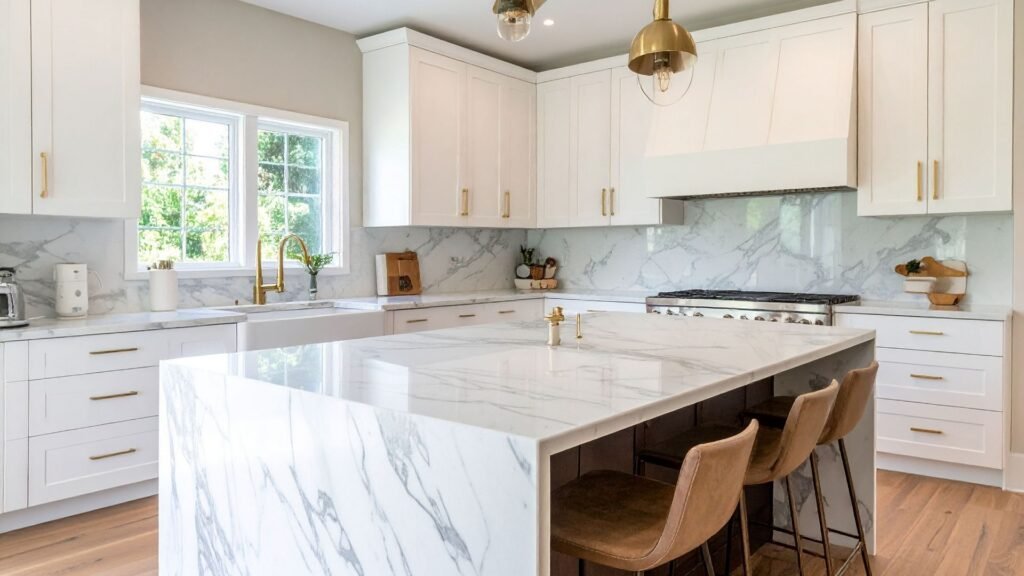
Ignoring The Budget
Set a clear total figure before you pick finishes or book trades. Break the budget into buckets so you control decisions, not the other way around. A simple split works well: labour 35–50%, materials 30–40%, design and compliance 5–10%, contingency 10–15%. Define must-haves vs nice-to-haves so you know what gets cut first if costs rise. Get at least three like-for-like quotes with the same scope, drawings, and finish list so you can compare fairly. Clarify allowances and PC sums, who supplies which items, delivery fees, and rubbish removal. Ask for a fixed-price contract for the defined scope and a written change-order process for anything extra. Track every invoice in a simple sheet each week. Keep a live tally of spend vs budget so surprises do not snowball.
Choosing Style Over Functionality
Great rooms look good because they work well. Map how you cook, clean, and store. Then design the space around those habits. In kitchens, plan clear zones for prep, cooking, cleaning, and storage. Favour drawers over deep cupboards for everyday pots and plates. Keep at least 900–1,000 mm of aisle space so two people can move with ease. Place bins by the sink, spices near the cooktop, and tall pantry storage close to prep areas. In bathrooms, aim for a roomy shower, smart storage at eye level, a niche that fits your bottles, and non-slip floor tiles. Layer lighting: task at the mirror, ambient for the room, and soft night lighting. Choose finishes that clean fast and wear well. Fingerprint-heavy doors, fussy grout lines, and high-gloss black taps look great on day one but can frustrate daily. Form supports function, not the other way around.
Skipping Proper Waterproofing
Waterproofing is not a place to cut corners. Leaks wreck framing, grow mould, and wipe out your budget. Use a licensed waterproofer and insist on the right system for your substrate. Expect full coverage on bathroom floors and all wet walls, sealed penetrations, and correct falls to the drain. Ask for a flood test before tiling and keep photos of each stage. Collect producer statements, warranties, and installation guides for your records. Ventilation matters as much as membranes. Fit an extraction fan that vents outside, not into the roof space, and add a run-on timer so it keeps working after showers. Plan heating to dry the room fast, like a heated towel rail or under-tile heat where suitable. Good waterproofing protects your investment and keeps your kitchen and bathroom renovations NZ project solid for years.
Not Considering Resale Value
You live in the home today, yet a future buyer will judge it tomorrow. Aim for a layout that feels intuitive, storage that solves real problems, and finishes that age well. Keep the big items neutral and timeless, then add colour with paint, textiles, and décor you can switch out. Pick mid-to-high quality fixtures that buyers recognise and trust. Choose water-saving tapware and energy-smart appliances to lower running costs. Avoid ultra-specific choices that shrink your buyer pool. Keep all paperwork: plans, certificates, warranties, and compliance records. Take progress photos before the walls close. When it is time to sell, a well-documented renovation signals care and builds trust.
By avoiding these mistakes, your kitchen and bathroom renovations in NZ will stay on budget, work better day to day, resist moisture damage, and hold strong appeal when you sell.
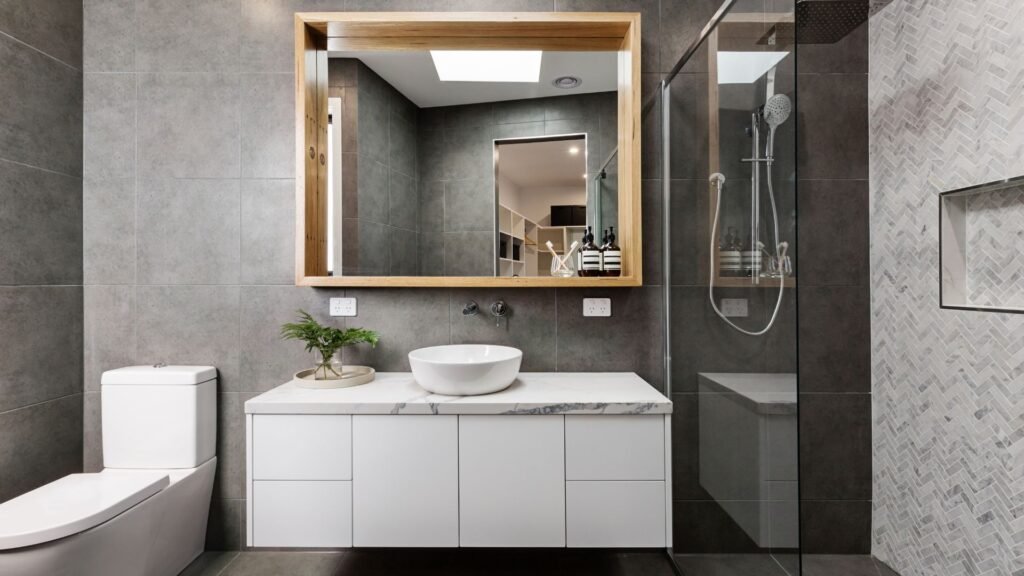
Tips For A Smooth Renovation
Renovating your kitchen and bathroom in NZ can run smoothly when you plan the work like a project. Set clear goals. Choose your team with care. Lock in materials early. Protect your routine while builders are on site. The steps below keep stress low and momentum high during kitchen and bathroom renovations in NZ.
Communicate Clearly With Contractors
Set Scope And Expectations
Write a short scope of work. List rooms, fixtures, finishes, and any must-have features. Share photos or sketches so everyone sees the same end result.
Agree On A Single Point Of Contact
Decide who approves changes and who answers day-to-day questions. Use one email thread or a shared chat for updates.
Create A Simple Timeline
Map out demo, plumbing, electrical, waterproofing, cabinetry, tiling, and final fit-off. Add target dates and dependencies.
Ask For Itemised Quotes
Request labour, materials, and allowances as separate lines. It helps you compare bids and control costs.
Lock In A Change Process
Use written variation forms. Show the price, new timeline, and reason before work proceeds.
Confirm Compliance In NZ
Ask how the team will meet the NZ Building Code, waterproofing standards, and any council consent needs.
Hold Short Check-Ins
Five-minute stand-ups at the start or end of the day prevent small issues from growing.
Smart Questions To Ask
- What could delay us this week?
- Where do you need decisions from me?
- What risks are you watching?
Order Materials Early
Build A Full Selection List
Benchtops, cabinetry, appliances, mixers, tiles, grout, lighting, fans, vanities, mirrors, shower screens, toilets, hardware, paint. Add brand, model, finish, and quantities.
Check Lead Times
Many NZ suppliers carry limited stock. Confirm ETA for custom cabinetry, stone, and specialty fittings. Ask for written dates.
Approve Samples Before Buying
View tile and paint samples in daylight and under your kitchen lighting. Small swatches can mislead.
Plan Substitutes
Choose a Plan B for each key item in case of delays. Keep finishes consistent across swaps.
Order Extra
Add 10% spare tiles and a couple of extra handles or mixers. You will thank yourself during repairs or future touch-ups.
Store Safe
Keep boxes dry, flat, and labelled by room. Photograph serial numbers for appliances and keep receipts together.
Sequence Deliveries
Time benchtops after cabinetry install. Time tapware before plumbing fit-off. Avoid crowding the site.
Have A Backup Plan For Living Arrangements During Renovations
Set Up A Temporary Kitchen
Use an induction hob, microwave, and bench-top oven. Create a dishwashing station with tubs if the sink is out. Batch cook or plan simple meals.
Keep A Bathroom Option
Stagger work so one bathroom stays usable. If not, arrange gym access or a friend’s place for showers on key days.
Protect Daily Life
Create a dust-free zone for work or study. Seal off rooms with plastic and painter’s tape. Ask the team about daily clean-ups and waste removal.
Plan For Utilities
Note days with water or power shutdowns. Charge devices and fill water containers the night before.
Think About Kids And Pets
Block off hazardous areas. Set quiet times for naps. Arrange pet care on heavy demolition days.
Budget For The Disruption
Add a small buffer for takeaway meals, laundromat runs, or short stays away from home.
Stay Flexible But Keep Goals In Sight
Define Must-Haves And Nice-To-Haves
Rank items before work starts. When surprises hit, you can swap a nice-to-have without losing what matters.
Track Changes
Keep a simple change log with cost, lead time, and reason. Review it weekly with your contractor.
Decide Fast, Then Move On
Slow decisions stall trades. Set a 24-hour window for selections like handles, grout, or tapware.
Guard Core Quality
Never compromise on waterproofing, ventilation, safety, or compliance. Savings here cost more later.
Watch Budget Drift
Compare actuals to your plan every week. Trim scope in low-impact areas if needed.
Close Strong
Create a snag list near the end. Test every tap, drawer, appliance, light, fan, and GFCI. Keep warranties and manuals together.
These steps keep your kitchen and bathroom renovations NZ on track, cut costly delays, and protect the finish you want.
Your upgrade can be simple and stress-free. Head to Builders Matakana, explore design paths, and compare options that fit your budget. Then request a fast quote.
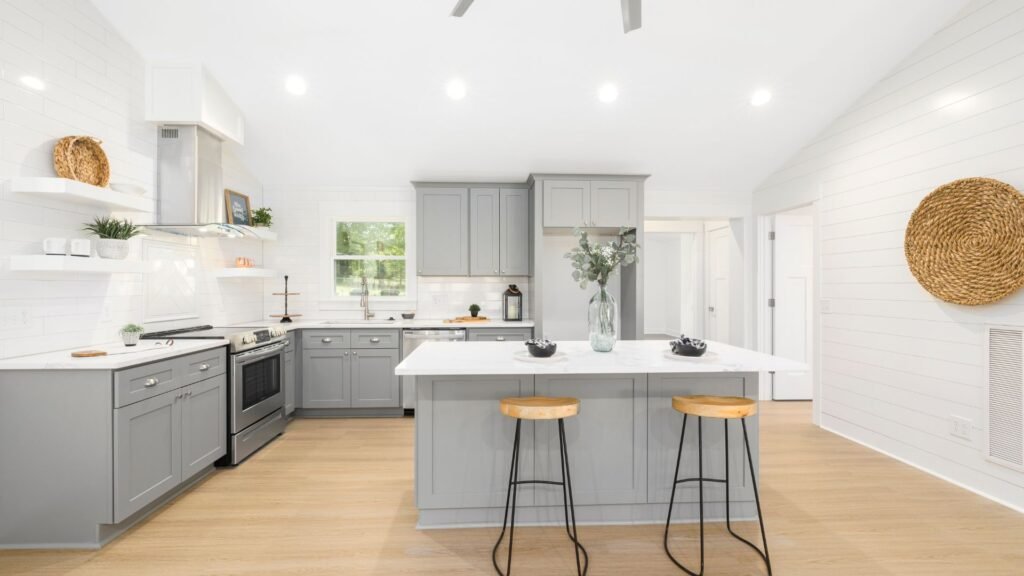
FAQs: About Kitchen And Bathroom Renovations In NZ
How much does a kitchen renovation cost in NZ?
Kitchen renovation costs in New Zealand typically range from $20,000 to $50,000. The final cost depends on the size of the kitchen, the quality of materials, and the complexity of the design.
How much does a bathroom renovation cost in NZ?
A bathroom renovation in NZ usually costs between $15,000 and $30,000. Prices vary depending on whether you choose basic updates or a complete high-end remodel.
What adds the most value in a kitchen renovation?
High-quality cabinetry, modern appliances, and improved layouts add the most value. Open-plan kitchens and energy-efficient features are also highly sought after in NZ homes.
Do I need consent for kitchen and bathroom renovations in NZ?
You may need building consent for work that involves plumbing, electrical changes, or structural modifications. Always check with your local council before starting.
How long does a kitchen renovation take in NZ?
On average, a kitchen renovation takes 4 to 8 weeks, depending on the scale of the project and availability of materials.
How long does a bathroom renovation take in NZ?
Most bathroom renovations take 3 to 6 weeks. Timelines can be longer if there are unexpected plumbing or waterproofing issues.
What are the latest kitchen design trends in NZ?
Popular trends include minimalist designs, natural stone benchtops, smart storage solutions, and sustainable, energy-efficient appliances.
What are the most popular bathroom renovation trends in NZ?
Walk-in showers, floating vanities, large tiles, and modern lighting are common. Coastal and minimalist styles are especially popular with NZ homeowners.
Should I hire a professional or attempt DIY renovations?
While small updates like painting or swapping hardware can be DIY, it’s best to hire professionals for plumbing, electrical work, or structural changes to ensure safety and compliance.
How do I choose the right renovation company in NZ?
Look for companies with strong reviews, proven experience, and clear communication. Ask to see portfolios of past projects and confirm they are licensed and insured.
Conclusion
Kitchen and bathroom renovations in NZ pay off because they lift daily comfort, fix layout pain points, reduce water and power use with efficient fixtures, and strengthen resale appeal in a market that values modern, well-planned spaces. When you plan with a clear scope, a realistic budget, and a simple timeline, you avoid costly changes and keep momentum. Choose durable materials fit for NZ conditions, confirm waterproofing and ventilation, and work with licensed trades who follow local codes and product standards. Keep communication tight, order long-lead items early, and track progress against milestones so you know what’s done and what’s next. If you’re weighing the next step, start small by listing your must-haves, nice-to-haves, and a target spend for both rooms, then request two or three quotes from proven NZ specialists to compare value, not just price.







